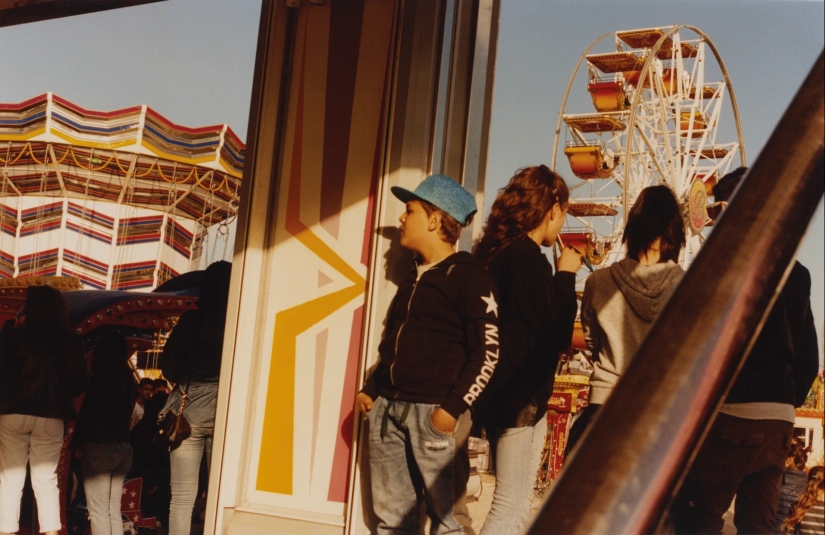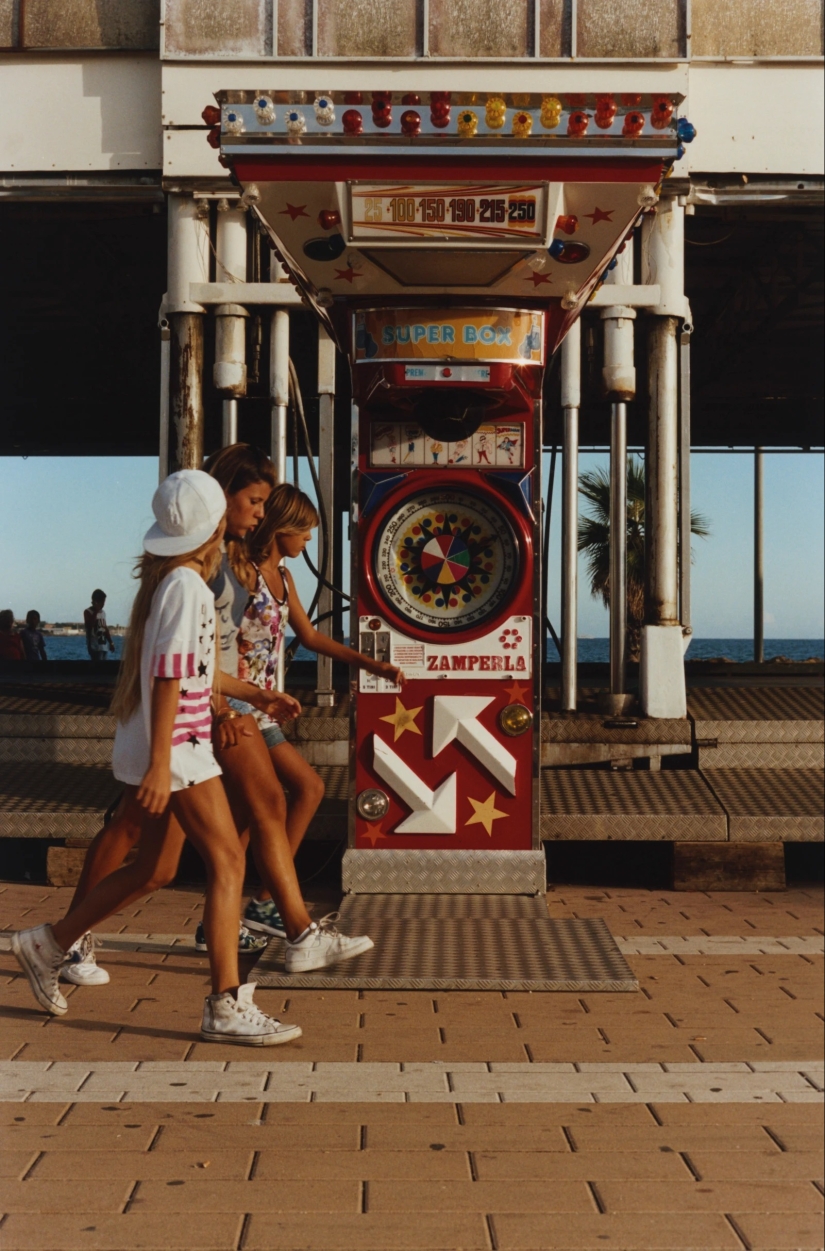Photographing Italian teens coming of age at rural fun fairs
Categories: Culture | Europe | Lifestyle | People | Photo project | Photo School | Society | World
By Vika https://pictolic.com/article/photographing-italian-teens-coming-of-age-at-rural-fun-fairs.htmlIn his new book 'Tagada', Paolo Zerbini captures young love, identity struggles, and the disappearing carnival culture of his childhood.
For five days in summer, a travelling fun fair would make a stop in Paolo Zerbini’s rural home just outside the sleepy Italian town of Mantova, and bring with it a year’s worth of drama and chaos. Masked by the bright lights, loud music and colourful rides, Italian teens, like him, came of age: negotiating the emotions and newfound freedom of a night away from their parents. “It was a very charged time in the life of 12 or 13-year-olds,” says the photographer, who has since travelled the country to document the disappearing carnival culture of his childhood. “Everything is supposed to be fun but it really wasn't like this,” he says. “It was emotionally powerful.”
Paolo went to his first fair with his parents when he was just eight years old, but the real fun started when he could go alone. “It was very exciting, but it was very much fuelled by tensions among the kids going and the feelings were complicated,” he says. Paolo remembers one time falling for a girl from the neighbouring town. They got separated and when he next found her, she was talking to some older boys who signalled with their hands in a way that in Italian means 'march on'. In his new book Tagadà, Paolo captures the territoriality of teenagers, of fleeting love and easy fights. “What I wanted to photograph is not the places but the feeling of having to decide what is your role in society. What kind of guy or girl are you going to portray yourself as? You're very young and confused, but it's that open stage where you have to make a decision and think about what you want to do.”
13 PHOTOS

1.

2. In rose-tinted pictures, sun-kissed couples sit close but tentative, girls take photographs of each other and chatter in groups while young boys come in wild packs. In one image two friends play fight with one pulling back a punch, and the other bearing a mark below his eye from a less friendly encounter. In another, a frenzied arm wrestle takes place for a crowd. The body language is hyper-masculine and unsure: tensed arms, stiff necks, and weary grins. One of the kids by the bumper cars, wearing a crucifix and with his hair slicked back, reminds Paolo of himself. There’s an awkwardness in his adolescence that mirrors his own.
He grew up with a strong sense that he didn’t fit in and desperately wanted to go somewhere that he could feel accepted — he moved to the States when he was 17, and later the UK to work as a fashion photographer. “A lot of what I choose to photograph in my personal work has some link to the place that saw me growing up,” Paolo says. “It taps into something very intimate, a very personal feeling that you keep feeling the need to express.”
In Italy, the young and the old are entwined in most aspects of life but at the fun fairs, there was a sense that they were divided and the adults weren’t invited in. You wouldn’t, for example, see one in line for Tagadà, the scariest ride at the fun fair and the one the book is named after: “It’s fear and laughter at the same time,” explains Paolo in the book’s introduction. “A split second of madness. Body first and mind to follow, both getting out of control. Tagadà makes you bounce, it makes your head spin. Eyes become so heavy you must squint them. One shouldn’t drink much before getting on the Tagadà, but obviously, everyone drinks way too much before getting on.” He says, “Welcome to your teenage years.”

3. Paolo embarked on the project, which took eight or so years to complete, as something of an outsider. He returned to the fun fairs in his mid-thirties while chaperoning his nephew, who preferred his cooler uncle to go with him rather than his parents. While he was left waiting for him to go on the rides, he had the chance to look around and capture what he was seeing. “There's always that initial fear that you're not welcome there,” he says. “But you soon overcome it.”
Although he visited upwards of 15 fun fairs across Italy from Bergamo to Catania, the book has a homogenous feel. It’s helped by the infrastructure and graphics, which dates back to the 70s and 80s to give it a retro feel, but it’s also a result of Luca Guarini of Dust Magazine’s creative direction. Printed in burnt reds and ochres, summer steams off the pages, the many charged days and evenings, synthesized into a single 24 hours: starting with images of the fun fair closed to a crazy night time of confusion. It’s stereotypically Italian, filled with passion and heat, but it also reflects the identity struggles of every young person coming of age on their first night out.

4.

5.

6.

7.

8.

9.

10.

11.

12.
Keywords: Photographing | Photography | Italian teens | Fun fairs | Paolo Zerbini | Love | Identity | Carnival culture
Post News ArticleRecent articles

In hotels, in addition to bed and breakfast, you can get a lot of additional options: from a companion fish to a walk with lions. ...

When a business owner believes that he does not need a product designer and Baba Manya from accounting can handle it, the result is ...
Related articles

The term "photography" appeared at the beginning of the XIX century, but the history of this art form has its roots in much more ...

We have shown you the best works of wedding photographers, proving that when a master takes over, wedding photography becomes an ...

There is a misconception that life used to be safer and calmer. Of course, this is just a misconception. Each historical period ...

Since ancient times, Georgian wine has been appreciated by connoisseurs not only in the Caucasus, but also throughout Europe and ...